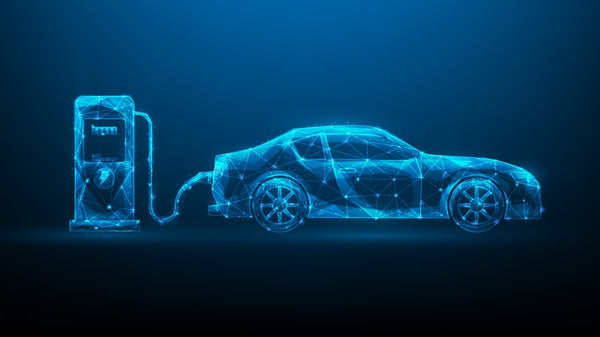
From Early Experiments to Mass Adoption: Tracing the Monumental Evolution of Electric Vehicles
Electric vehicles (EVs) once constituted niche alternative fuel pursuits constrained by immature battery capacities, sparse public charging networks, and astronomical costs, resulting in limited mass appeal uptake only by environmentally conscientious early adopters historically. However, two decades of persistent technological refinements, infrastructural public-private investments, and attractive financial ownership models accelerate mainstream EV adoptions, delightfully electrifying mobility sustainably.
This chronological analysis traces pivotal milestones progressively disrupting mobility paradigms transitioning EVs enveloping ever-widening demographic groups wholeheartedly while tackling persistent limitations responsibly nudging resounding global public policy support collectively ushering in next-generation mobility eco-responsibly.
Evolution of Electric Cars: 19th Century Experiments Kickstarting Electrification
European and American innovators began pioneering early electric wagons and carriages experimentations seeking clean city transport alternatives as early as 1832, leveraging primitive lead-acid battery capacities reasonably attaining 20-mile ranges typically. Commercial popularity acutely manifested matching intra-city goods and public commuting needs accessing newfound mobility liberations electricity facilitated affordably by 1900.
However, Henry Ford's game-changing Model T mass production efficiencies dramatically lowered ownership costs at scales challenging the predominance of fledging electric transport sustainability across all mobility spectrums already struggling to achieve extended driving ranges suiting long haul use cases emerging in that era. Electric vehicles faced a severe existential crisis as consecutive enhancements like self-starters and manual transmission eliminated two key EV advantages - avoiding hand-cranking ignition or gear-shifting operations needing only moderate driver competencies, democratizing adoption broader public segments, and embracing personal automotive growth exponentially forwards.

The Roaring 20's: Resurgence Through Practical Usage
Following rapid vehicular individual ownership proliferation through the mid-1920s dominated by affordable fossil fueled variants owning unassailable cost advantages and driving range capabilities intercity travels demanded, niche urban use case resurgence witnessed a renewed interest in mid-1920s leveraging electrics operational suitability for short trips applications like warehouse goods movements, or neighborhood commutes gaining both cities administration approvals and pioneering manufacturers support encouraging proliferation again.
Models popularity peaked, reaching 25% of US entire automobile sales briefly until American love affairs with road trips gained irresistible fascination yet again, with gas-fueled variants already attaining 300-400 miles tank ranges, meeting traveling escapades and commercial hauling practicality MIC EVs struggled to match given energy storage technology limitations back then fundamentally.
The Oil Crisis Resurgence: 1970s Opportunities Reviving Interest
Tumultuous global oil supply shocks through the early 70s resulting in debilitating pump price hikes renewed faith in exploring electric options again, potentially remedying excessive 'fuels' oil dependencies, although mainly through legislated interventions like the California Clean Air Act in the 1990s than an organic consumer pull alone, given lingering battery storage advancements inadequacies still delivering under 100 miles realistically unattractive most buyers [2].
Post-millennium resurgence leveraging lithium-powered battery capacities increases and environmental emissions considerations witnessed several enterprising startups committing to advancing EV opportunities like promising progenies of next-gen next-generation personal mobility landscape. However, lack of public infrastructure support through nationwide charging facilities buildouts coupled with fossil fuels already attaining improving emissions significantly over earlier generations stifled organic adoption growth again, broadly limiting EV niche demographic appeals alone unless government intervention mandated transitioning agendas once more.
Looking for aftermarket auto parts? Check out our online inventory.
The 2010s Tipping Point: Early Adopters Gradually Mainstreaming EVs
Collapsing battery pack costs by over 85% last decade, now nearing parity against internal combustion engine costs equivalencies coupled with concerted eco-political goodwill driving public infrastructure has proven decisive, improving value proposition attractiveness dramatically in the plug-in electric passenger car segment especially. Globally, EV volumes maintain healthy year-on-year growth trajectories, already achieving over 4 million annual sales by 2018, with Bloomberg forecasting this will reach 21 million by 2025 and over 56 million yearly by 2040 as technology maturation, public sentiments, and policy priorities converge, accelerating mainstreaming ramp-up delightfully [3].
Additionally, commitments to developing ubiquitous supercharger corridors like emerging European chargers networks that target charging stations at a maximum of 60 miles apart continentally will alay range anxieties, considerably improving adoption confidence for long journeys use cases also - the last limitation persistently hobbling mass segment penetration wider historically.
Present Day: EVs Attaining Irreversible Market Momentum
Multiple synergizing factors drive unstoppable monumental EV adoptions despite intermittent raw material supply volatilities or recessionary energy pricing dynamics, temporarily steering preferences to be more value-centric.
- Continuous Li-Ion Battery Improvements: 500-600 km real-world range epochs breached over 75% charge retention, improving driving confidence.
- Wider Model Choices: Over 500 models are launching in 2025, from entry hatchbacks through hyper SUV budget segments spoilt for decisions that are uniquely personalizing options.
- Normalization of Public Charging behavior and crucial infrastructure expansion through trailblazing frameworks like EU stiff 95kw+ charging corridor interlink mandates within essential intra-state networks buildout steadfastly will likely completely demystify range anxieties even most skeptical adopters by 2025 instead of focussing evaluations on positive ownership experiences EVs deliver delightfully over conventional fuels life cycles cost advantages only accelerating switches adopting cleaner electric futures faster.
The sheer choices and dilemmas ahead signal strong, irreversible change winds electrifying mobilities for good!
Conclusion
Pivotal EV milestones collectively advanced electrified mobility matching demanding use cases constraints progressively now achieving performance, convenience, and ownership experiences parity against mature combustion engine rivals, opening floodgates for mass adoption transformations delightfully well underway. Driven by persistent innovations, infrastructure buildouts, and environmental commitments – modern EVs stand at the cusp of revolutionary energy and automobile industry disruption, just starting to usher cleaner sustainable mobility alternatives benefitting economies and ecological welfare responsibly for the future.

